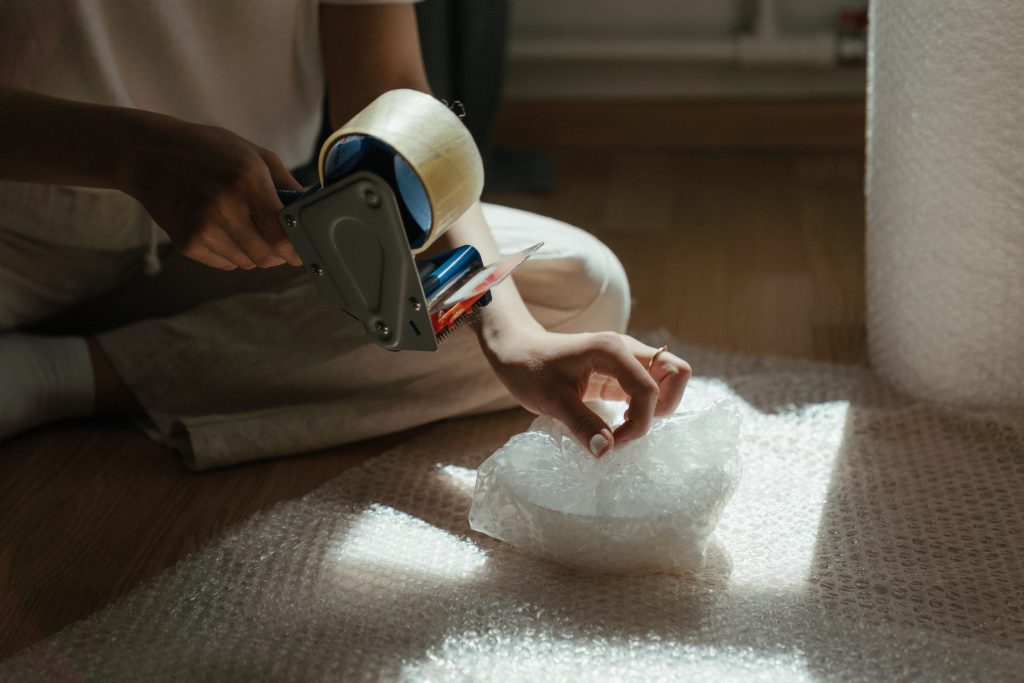Henri Matisse once said, “Creativity takes courage.” This could be understood in different ways since many artists have shaped contemporary culture throughout history and enriched our lives with their work. Art is almost always revolutionary in a way, where the artist pours his vision onto the canvas, making it eternal. These unique pieces are not always understood, and their value varies. Still, for artists, their creations are priceless, so finding the best way to keep them safe and preserved is vital. Time, storing conditions, and transportation are the three worst enemies of canvas art. And while the first two damage the artwork over a period of time, inadequate packing and transportation can be fatal in a matter of seconds. Finding the best ways to transport canvas art in 2021 to galleries and buyers is an essential factor in the art business.
Art Requires Resourcefulness
Succeeding as an artist is challenging since there is so much talent in the world. To stand out from the crowd, you will need to push hard and develop a strategy to turn it into a successful business. It is a common misconception that being an artist’s work ends with the act of creation. Like with any other job, you need resourcefulness and skills in handling all the other aspects involved in this line of work. Preparing the pieces for transport is not hard if you follow a few tricks of the specialized items transport trade. Packing and shipping your canvas art can also be done by professional services if you don’t have the time or patience to deal with it.
Necessary Materials for Canvas Art Protection
Packing the artwork, like creating it, is impossible without the right tools. Hence, acquiring the game-changers in the job will make things easier in the long run. All of them are affordable and can be bought in most specialized stores. To prepare your package for shipment, you will need:
- plastic wrap or glassine paper
- cardboard
- a tape gun with high-quality tape
- bubble wrap
- a box of adequate dimensions
- measuring tape
- markers

The Most Efficient Packing Procedure
Unlike glass, the canvas is somewhat less fragile. Still, if we don’t protect it adequately, damage during transport can happen. Hence, using multiple layers is a great solution to prevent any mishaps.
Step 1 – The first layer
Even though some people apply plastic wrap directly on canvas art, it’s preferable to use glassine paper as the first layer of protection to avoid plastic wrap sticking to the art. The sticking doesn’t always damage the work, especially during the short period of transport. Still, the choice it’s up to you.
Step 2 – Cardboard protection
It’s never easy to find a cardboard box the exact size of your artwork. In such cases, it’s necessary to be creative. Using a tightly wrapped cardboard layer of protection will absorb the shock of rough handling or dropping the piece. The cardboard comes in single and double-wall sheets, and using either option is good, though a single-wall sheet might be easier to handle. After all, canvas art is usually not very heavy or delicate like glass or antique pieces with rich frames. But here comes the hard part. Wrapping will require some measuring and cutting. Thus, putting the canvas on the sheet and marking where to fold it will do the trick. Following these lines should be easy. After folding, secure it with tape. If you haven’t done it before, it might take some practice to make it look clean and professionally packed, but don’t worry, you’ll get there.
Step 3 – Bubble wrap for extra padding
The artwork is adequately protected with the previous layers, but you can ensure it is impenetrable by providing extra cushion protection. This will be the last step before putting it in the shipping box. It would be ideal to cozily tuck in your canvas without giving it extra space for movement.
Step 4 – Shipping box
When buying shipping boxes, pay extra attention to the size. If possible, get the closest dimension to your art piece, but don’t forget to count in some extra space for protective layers that go around it. If not, you can modify the boxes the same way you’ve done it with the cardboard protective layer. Any additional space inside the outer box can be filled with more wrapping paper to prevent tumbling. To be safe, wiggle it to see if there is any movement before sealing it.
Step 5 – Taping
Finally, tape the box on the outside. While doing it, have in mind that your taping skills will be noticeable to everyone who sees the package, so think about the professional appeal you want to achieve. There is no room for messy and chaotic moves here. Use the tape gun with high-quality tape and use it right. It’s imperative to carefully secure every seam of the box. Only by having done all that can you safely transport your artwork.
Step 6 – Labeling the package
Every valuable or delicate object should have a label that says fragile on the outer box. No matter the method of your shipment, having the screaming sign to remind the carrier means more than you know it.
Shipping the Artwork
The ideal way of delivering artwork is the old-fashioned personal method. Personally delivering things shows dedication and respect towards the buyer. We all know how hard it can be to sell artwork, so keeping clients is crucial. But if your client is miles or continents away, this would be time and money-consuming. Logically, you’ll want to do it in the best way possible, prioritizing professional service and affordability.
The Cost of Services That Transport Canvas Art
Even though there are many great shipping companies, going for a verified one is the best way to transport canvas art. When shipping regular items, weight is often considered as the main factor to estimate the costs. However, when it comes to artwork, dimensions play an important role as well. No matter how light the package is, both size and weight are taken into account when transporting specialized items.

Different companies have developed different ways of estimating shipping costs, so contacting several of them will help you decide which offer suits you best. Naturally, smaller packages will cost less, but shipping a huge canvas can cost you three times more than you’d expected. No matter the size/weight ratio, big pieces will take up a lot of space during transport, so the company will consider that during the estimate.
Insurance of Your Artwork
No matter how well you’ve protected your work, canvas art can still get damaged or destroyed during transport. And even though these mishaps are rare when hiring quality service, consider getting insurance for your art. Having a business insurance policy is smart if your goal is to find the best ways to transport canvas art. But if you find this option not so affordable and ship the art only occasionally, you can always go with carrier’s insurance, even though the coverage is minimal. Either way, it’s up to you to decide the value of the artwork you create.
Author bio: Geoffrey Waller is an art enthusiast and a consultant at Best Cross Country Movers. His experience in packing and relocation of specialized items helped him develop a knack for handling delicate artwork.


